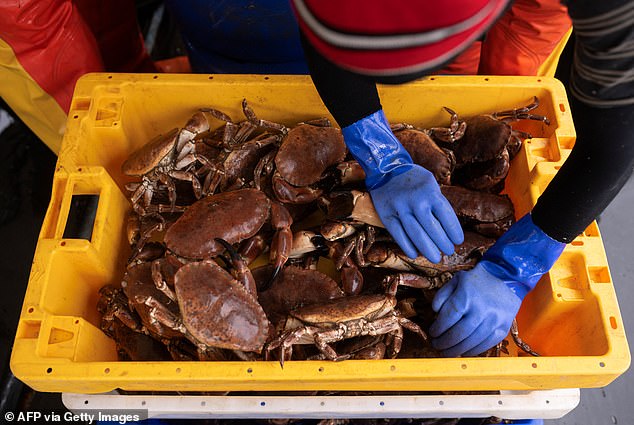Health officials have warned against eating shellfish caught off the Pacific Northwest coast due to fears of contamination with a lethal poison that causes paralysis and death.
The Washington Department of Health has detected dangerously high levels of a deadly toxin called paralytic shellfish poisoning (PSP) in groups of shellfish harvested off the coasts of Washington and Oregon.
According to an announcement from authorities, contaminated fish already sickened 20 people in Oregon over the Memorial Day weekend.
PSP is a natural toxin carried by shellfish and cannot be destroyed by cooking or freezing the catch.
Symptoms can occur within minutes of eating the food and include numbness and tingling in the hands and feet. Over time, it can lead to difficulty breathing, muscle paralysis, and in the worst cases, death.
Paralytic shellfish poison (PSP) is a natural biotoxin carried by algae-eating shellfish.
To protect area residents, beaches and commercial fisheries have been closed in the Willapa Bay and Grays Harbor regions.
Dani Toepelt, Washington Seafood Licensing and Certification Manager, said: ‘We are working around the clock to notify and collaborate with affected shellfish producers in Willapa Bay.
“The industry is doing everything it can to overcome this PSP event and protect seafood consumers from getting sick.”
The contamination off the Washington coast is believed to have spread from a PSP outbreak that began along Oregon’s Pacific coast and sickened at least 20 people in May.
No illnesses have been reported as of June 5 in Washington.
Oregon officials encouraged people who had recently harvested shellfish along their coast to discard their catch.
A 2021 study Found cases of PSP are increasing in North America, likely due to warming water temperatures.
Experts and health officials don’t know exactly how many cases of PSP have been documented in the United States, but an Alaska State Epidemiology report states there were more than 130 incidents of the condition between 1993 and 2021, data from the last year are available.
And at least five deaths were reported between 1994 and 2020.
PSP is produced by certain types of microscopic algae, which are consumed by shellfish. Those fish then retain the toxin and can transmit it to people who eat them.
The biotoxin affects the nervous system and can cause muscle paralysis. High levels can cause death.
Immediate symptoms of PSP poisoning include tingling of the lips and tongue that progresses to the hands and feet. In severe cases, people may have difficulty breathing and poisoning could be fatal.
Shellfish at risk of contamination include mussels, clams, oysters, scallops and moon snails. Sea cucumbers and crabs can also become toxic.
Under typical circumstances, toxic algae are present in the water, but at such low levels that they do not pose a risk to humans.
However, when algae bloom, shellfish consume an increasing amount, causing PSP to accumulate in marine fauna.
As the amount of algae decreases, the shellfish filter out the PSP and become safe to consume again.
PSP levels in shellfish may take only several days to decrease, but experts warn that levels can remain at toxic levels for more than several months, and cooking or freezing the fish does not eliminate the biotoxin.
Anyone who eats contaminated shellfish runs the risk of poisoning, and there is no antidote. The only treatment for severe cases is a ventilator and oxygen therapy until the person recovers on their own.
Washington health officials said they routinely test seafood sold in restaurants and stores for biotoxins, including PSP.
Overall, marine poisonings are increasing throughout the United States.
Earlier this year, the CDC warned of a growing number of Americans becoming infected with a deadly flesh-eating bacteria lurking in seawater and estuaries.
Vibrio vulnificus, which thrives in warm temperatures, is infecting twice as many people on the East Coast compared to 2022, new CDC data showed.
Scientists also blame rising water temperatures for the increase in bacteria.


